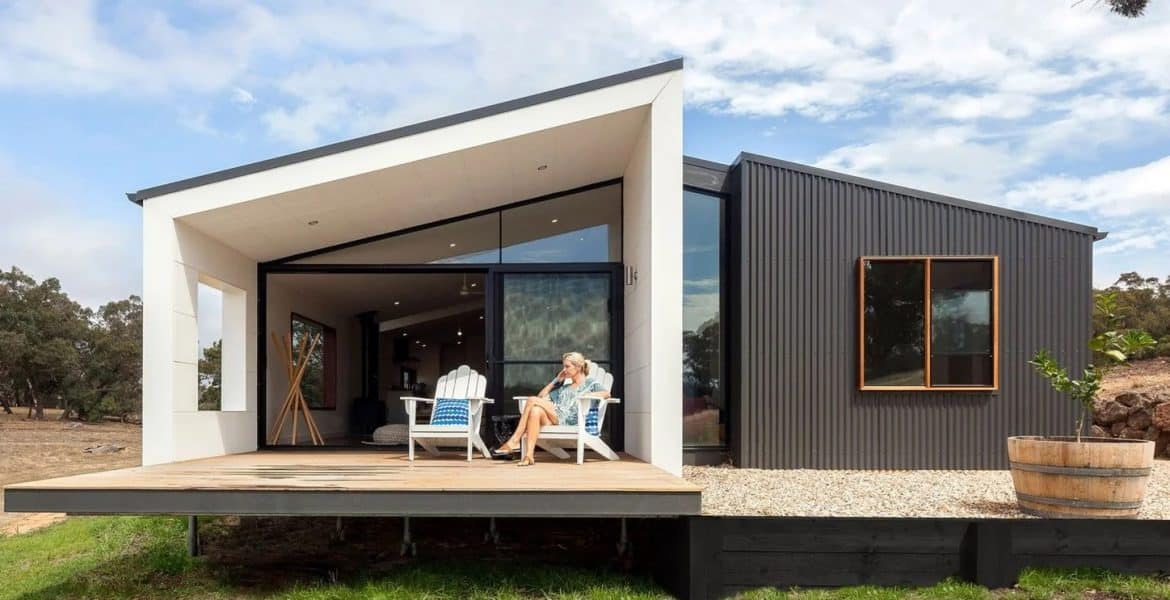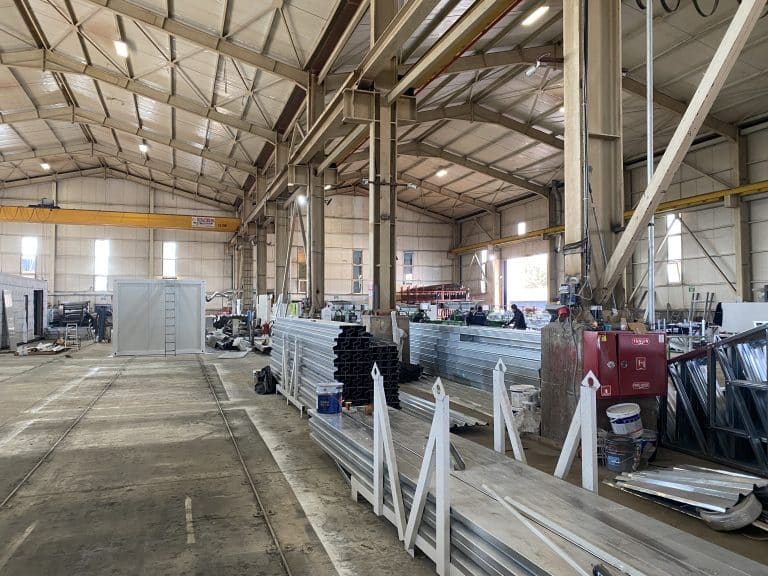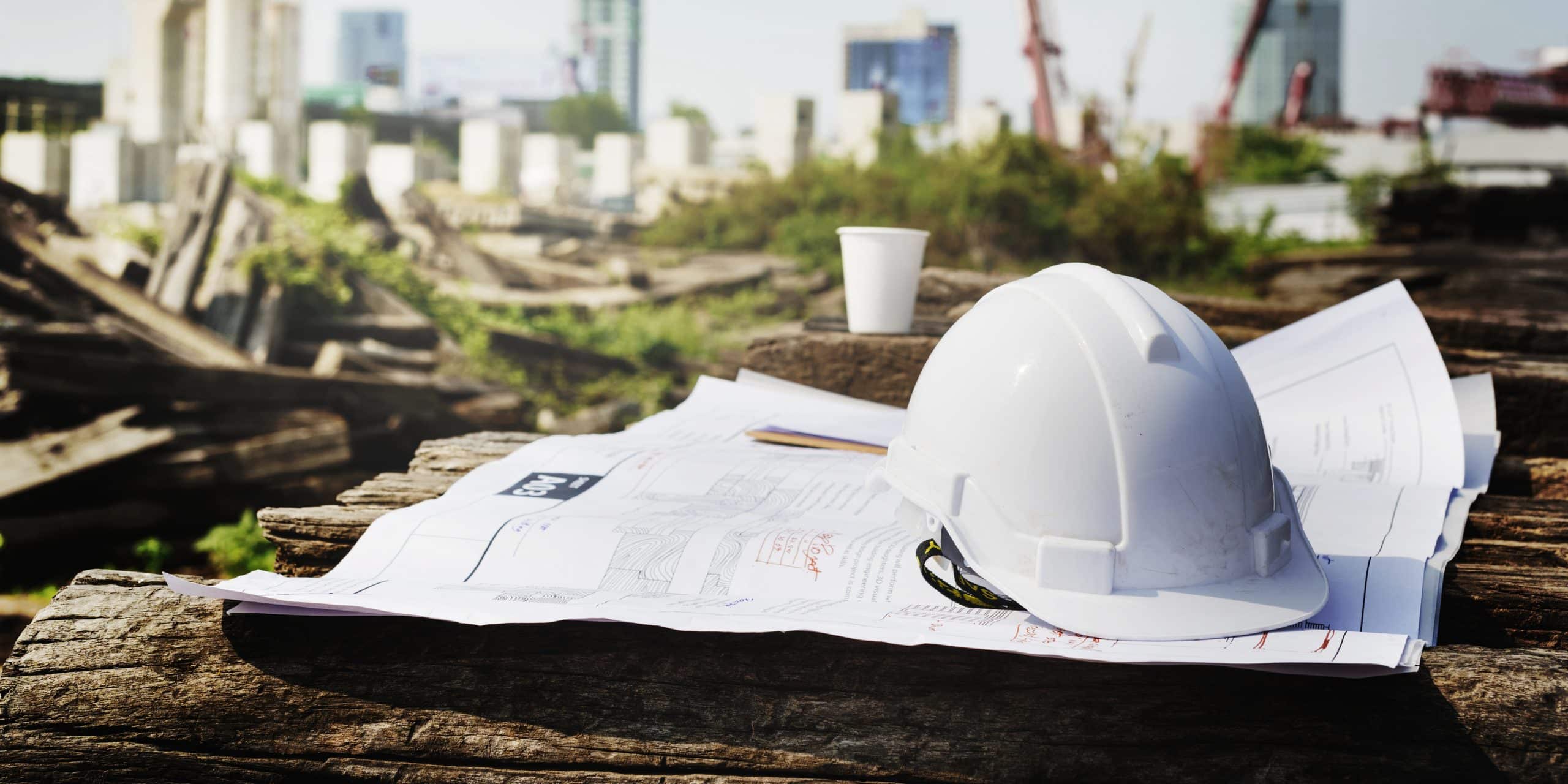A prefabricated house also referred to as a prefab home is a house that is constructed using prefabricated constructions or sections. The elements are pre-fabricated, mostly in a factory, and then shipped to the construction site for installation.
Houses that are built off-site or in factories have gained much popularity in Turkey for the following reasons in comparison to site-built houses. Some of the key benefits of prefab houses in Turkey include; short time of construction, lesser price, better quality, least wastage, high versatility, and energy conservation.
The use of prefabricated houses is viewed as a modern and effective way of solving the housing problem in Turkey, at the same time decreasing the cost of construction and negative impact on the environment.
This article aims to focus on prefabricated houses in Turkey such as the costs, construction phases, types of prefab houses, and benefits of living in a prefab house.
Prefabricated House In Turkey
In Turkey, we manufacture high-quality prefabricated houses that are strong, durable, and satisfy international standards. One of the most important advantages is the speed of construction. Because the parts are manufactured in factories, the construction procedure is far faster than traditional methods. This means you can move into your new house fast, rather than waiting months.
Another reason to select prefabricated houses from Turkey is cost savings. Turkey provides competitive costs without compromising on quality. We ensure high-quality homes at reasonable prices by employing skilled employees and innovative manufacturing procedures. Because of Turkey’s strategic location, we can export prefabricated houses to practically anywhere in the world with ease and efficiency.
The construction process for prefabricated homes Turkey involves five main steps:
Prefabricated Houses Manufacturers in Turkey
Turkey is home to many skilled prefabricated houses manufacturers that focus on quality and customer satisfaction. These manufacturers use advanced technology and high-quality materials to build homes that are durable, cost-effective, and quick to assemble.
With a variety of designs and customization options available, clients can choose homes that perfectly match their needs and preferences.
One of the best prefabricated houses manufacturers in Turkey is ACAR Yapi. They are known for providing excellent quality homes that are delivered on time to there customers. ACAR Yapi’s commitment to precision engineering and high standards ensures that each home is strong, comfortable, and built to last.
Manufacture Process
Stage 1: Architectural Drawing
The prefabricated house manufacturing process starts with architectural design and planning. Architects create detailed plans based on the client’s requirements, while engineers ensure the structure is safe and complies with building regulations.
Stage 2: Material Selection
After finalizing the design, suitable materials are chosen based on quality and durability. Factors like wind resistance, temperature variations, and customer preferences are taken into account during this stage.
Stage 3: Component Production
The next step is manufacturing the components in a controlled factory setting. Materials are precisely cut and shaped into sections such as walls and roof panels. These parts are assembled into modules, undergoing strict quality control checks to meet all standards.
Stage 4: Transportation
Once the modules are complete, they are transported to the construction site. The site is prepared, and the modules are carefully placed onto the foundation.
Stage 5: On-Site Assembly
The modules are connected, and utility systems like electricity and plumbing are installed. Final touches, including windows, doors, and interior finishes, are added. A thorough inspection ensures compliance with regulations and customer expectations.
Advantages of Prefabricated Houses in Turkey
In Turkey, we build high-quality prefabricated houses that are strong, durable, and satisfy international standards. One of the most significant advantages is the quickness of construction. Because the parts are manufactured in factories, the construction procedure is far faster than traditional methods. This means you can move into your new house fast, rather than waiting months.
Another reason to select prefabricated houses from Turkey is cost savings. Turkey provides competitive costs without compromising on quality. We ensure high-quality homes at reasonable prices by employing skilled employees and innovative manufacturing procedures. Because of Turkey’s strategic location, we can export prefabricated houses to practically anywhere in the world with ease and efficiency.
Prefabricated houses have grown in popularity in Turkey due to the many benefits they offer below you can find more:
· Speed of Construction – Since prefab homes are built in a factory, on-site assembly is much faster. Homes can be ready in days or weeks instead of months, allowing homeowners to move in sooner.
- Cost Savings – Prefab homes in Turkey are 40-50% cheaper than traditional homes due to mass production, reduced labor, minimal material waste, and efficient logistics.
- High Quality – Factory-made components ensure better quality control, precision engineering, and protection from weather. Advanced machines produce consistent, error-free parts, making prefab homes durable and long-lasting.
- Customization Options – Clients can personalize layouts, finishes, and facades. Prefab homes can also be modified or expanded later if needed.
- Sustainable Housing – Prefab homes use less energy, water, and materials, making them an eco-friendly choice.
- Resilient Structure – Built to strict standards, prefab homes offer better resistance to earthquakes, floods, and other natural disasters compared to conventional buildings.
Prefabricated House Price in Turkey
One of the biggest advantages of prefabricated houses is that they are cheaper to build compared to conventional houses. Here are some example prices for prefab homes in Turkey:
- For a small 100 m2 prefab home, the total cost is around 17,000 USD.
- For a medium-sized 150 m2 prefab home, the estimated cost is about 25,000 USD.
- For a larger 200 m2 prefab home, the total cost is around 30,000 USD.
So the cost per m2 for prefabricated homes ranges from 170 USD to 300 USD based on the size. The cost per m2 decreases with increase in total house size due to economies of scale.
These prefab house prices include all construction costs – factory manufacturing, Windows , Doors , Insulation etc. The prices can vary slightly based on the level of customization and amenities.
Types of Prefabricated Houses in Turkey


There are several types of prefabricated houses made using different construction methods and materials:
Concrete Prefab Houses
These consist of precast reinforced concrete panels that are joined together onsite. Concrete offers strength and durability. The panels can have insulating concrete forms (ICF) for energy efficiency. These homes need minimal maintenance.
Steel Prefab Houses
These use lightweight steel framing and panels that are bolted together onsite. Steel prefab is fast to construct and transport. The steel frame is resilient against seismic activity. Steel panels can have insulation.
Timber Prefab Houses
Prefabricated timber houses are made of large wooden panels that interlock onsite. Timber offers sustainability and aesthetic appeal. The wood panels typically contain factory-fitted insulation, plumbing, electricals, etc.
Modular Prefab Houses
These consist of multiple prefabricated ‘modules’ or boxes made of steel, concrete or timber. The modules are transported and joined together to form the house. Modular prefab allows custom room arrangements.
Mobile Prefab Houses
Mobile homes are prefab houses built on steel or trailer chassis so they can be towed to different sites. They need utility connections at the site. Mobile prefab homes are affordable and can be expanded.
A-Frame Prefab
A-frame prefab homes have steeply angled roofs in an ‘A’ shape that extends to the ground. The triangular A-frame structure makes them stable and spacious. They can be built with various materials and are easy to transport.
Conclusion
Prefabricated house in Turkey is an effective, eco-friendly, and economical way to address the housing shortage in Turkey. Due to their numerous construction and cost benefits, prefab homes are becoming more and more popular all around the country.
The time taken to construct the houses is also shorter and the houses can also be customized which is why prefab housing is appealing to the buyers. As the technological advancements in offsite manufacturing continue, prefabricated houses are likely to revolutionize Turkish housing in the next decade.
Get Proposal for your project
Get a quote today!
CHECK THESE TOO













